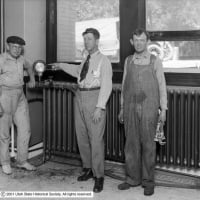Welcome! Here are the website rules, as well as some tips for using this forum.
Need to contact us? Visit https://heatinghelp.com/contact-us/.
Click here to Find a Contractor in your area.
The best combustion analyzer for around $1000.00 is ...
cable 21
Member Posts: 15
Looking for info on best combustion analyzers for residencial application, oil,nat gas, lp. Any help for a plumber who has started his own bussiness and cares about his customers. Thanks Rick S
0
Comments
-
TESTER
I have had GREAT results with with my TESTO 325.
Thanks
Ray m0 -
Thanks, have heard many good things about testo 325.0 -
Bacharach Fyrite Pro 125 with printer. Great, easy to use machine...and comes with Rudy!
TimJust a guy running some pipes.0 -
Rudy alone
is worth WAY more than 1k!
I cut my teeth with the 120. I still have and use two of them.
I got an TSI unit a while back that is quite the instrument.
Never purchased a Testo. They are accurate, but they are slow. They will not see spikes. That is a fact, not an opinion.
I NEED to see spikes.
More important is knowing what the numbers mean and how to make them right.
If you haven't been to one of Jim Davis's classes yet, you really need to get to one.
Mark H
To Learn More About This Professional, Click Here to Visit Their Ad in "Find A Professional"0 -
check specs on the O2 sensor..
be sure to check the specs for the expected life of the O2 sensor. these are essentially similar in part to a regular primary battery - they put out a signal to the cpu with the O2 info based on an on going electrochemical process. the dirty little secret with these things is that this part starts to die from the moment it's manufactured (like a battery)- it doesn't matter whether you use the analyzer or not. many have a typical life of about 2 years. one of popular sensors used in a few of the bacharach fyrite models (pn 24-8106) is field replaceable so you can do it yourself without having to send it in. still, you're looking at about $135. pl shipping to replace it - that's about $70./yr just to keep the unit alive. you'll want to investigate what type of sensors the other popular units use.
and of course we haven't even mentioned the cost of replacing the CO sensor yet.....
2 cents
ss0 -
Excuse me but....
I have never placed a dollar sign on saving a client's life or ensuring my own peace of mind.
It is the cost of doing business as a professional.
To paraphrase another professional.. you are either testing or you are quessing.
Lets see: O2 sensor $150.00 human life and peace of mind -priceless..
The only way to beat it.. is to know it. UW0 -
Dirty Little Secret?!?!?
Two years is probably a good average for any manufacturer's O2 sensor - and like you said they start working the day they are manufacturered and really take off when removed from the container as they are exposed to oxygen 7/24 from then on.
The main thing I've found to get a full life out of a sensor is to 'keep it dry'.
Empty condensate out of the moisture trap and at the end of the day, leave it open in the case.
When you are done testing, disconnect the probe assembly and let the instrument post purge for 5 - 10 minutes. The sensors are working anyway so letting it run won't shorten their life.
The CO sensors are only 'working' when exposed to CO, as such, their lifespan is considerably longer (5-7 years). Again post purging will extend the life of a CO sensor as moisture can damage it as well as CO left in the instrument when it is shut off.
Also, don't over expose the sensor - when the reading gets above a couple of hundred ppm's, pull it out (unless yer like me and ya just gotta know!!).
The CO sensors I am familar with generally loose sensitivity through out the year. My experience is that after 1 year a typical sensor will be reading 470 (plus or minus) with 500 ppm cal gas.
Calibration is an issue and I encourage folks to do it themselves - particularly if you have a couple of instuments - it only takes 3 or 4 calibrations to payback the initial investment of a cal kit.
jmho0 -
thanks
Thanks for the replies, it all helps.0 -
Doesn't matter
Most combustion analyzers have good features. If you like slow, you buy one model, if you like fast you buy another. The only readings on them that have any meaning are the O2, CO and Stack temperature. All other calculations are false and misleading. Regardless of how good the analyzer, if you don't know how to interpret the data, it is quite useless and can cause more harm than good.0
This discussion has been closed.
Categories
- All Categories
- 86.3K THE MAIN WALL
- 3.1K A-C, Heat Pumps & Refrigeration
- 53 Biomass
- 422 Carbon Monoxide Awareness
- 90 Chimneys & Flues
- 2K Domestic Hot Water
- 5.4K Gas Heating
- 100 Geothermal
- 156 Indoor-Air Quality
- 3.4K Oil Heating
- 63 Pipe Deterioration
- 916 Plumbing
- 6K Radiant Heating
- 381 Solar
- 14.9K Strictly Steam
- 3.3K Thermostats and Controls
- 54 Water Quality
- 41 Industry Classes
- 47 Job Opportunities
- 17 Recall Announcements
